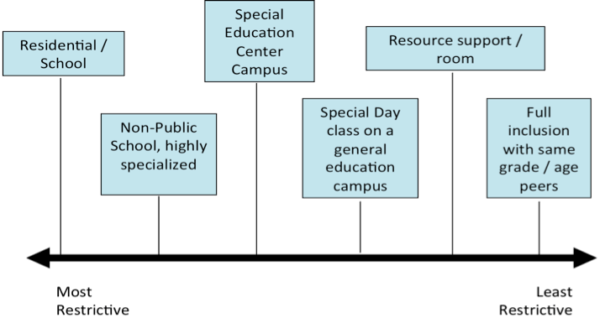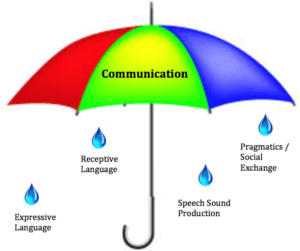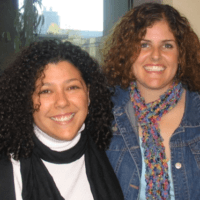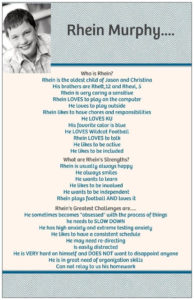Creating an IEP – or Individualized Educational Program – can be an incredibly confusing and daunting experience. The “alphabet soup” of acronyms and legalese often increases the anxiety and uneasiness for families. There are often many professionals in the room, some just popping in and out during the meeting, and families can feel isolated and not fully part of the process. One way to offset these feelings is to prepare ahead of time.
We’ve designed this article to be an at-a-glance format, combining our professional expertise and some handy resources. This information is presented via FAQs (more alphabet soup for frequently asked questions) and IEP insider tips. In addition, we have included voices and insights of families from the NFXF community and their perspectives based on personal, first-hand experiences about the IEP process. We’ve kept the families anonymous and sincerely thank them for their valuable comments and suggestions. All family contributions are italicized so you can quickly find them.
Be sure to check out the many handy resources at the end. It is our sincere hope that families can find some helpful information to aid them in confidently participating in your child’s IEP as a key member of the team.
Frequently Asked Questions
What is IDEA – Individuals with Disabilities Education Act? And Now IDEIA – Individuals with Disabilities Education Improvement Act?
IDEA / IDEIA is the federal law that makes special education available for students with special needs.
What are FAPE (Free and Appropriate Public Education) and LRE (Least Restrictive Environment)?
FAPE – Free and Appropriate Public Education: FAPE is central to the federal law and is a protected right of children eligible for special education. Just like all other children, students with special needs have the right to a free public education.
LRE – Least Restrictive Environment: This means that schools must consider teaching a child with special needs in general education whenever possible. There is a continuum of “restrictiveness” ranging from the most restrictive of residential placements, to special education centers where all children on the campus have special needs, to special education classrooms on general education campuses, to resource style classes where students spend parts of a day in special education and parts of the day in general education and full inclusion in general education settings. The graphic is a representation of “restrictiveness”.

What is an IEP – Individualized Educational Plan or Program?
An IEP is a written statement for each child with a disability, and it is developed, reviewed and revised according to the requirements of IDEA.
IEPs are typically held once per year, but the timing may vary depending on the needs of your child.
Tip: You can call an IEP meeting any time.
IEPs typically have a flow of how things will proceed. Each team is different, but generally the team should use the following flow for discussing the student’s educational program.
- IEP team must collaboratively brainstorm to identify needs within the PRESENT LEVELS OF PERFORMANCE.
- areas of identified need, the team must develop GOALS AND OBJECTIVES.
- Once completed, THERAPY SUPPORTS are discussed and documented that may be necessary in order to meet the agreed upon goals and objectives.
What is Speech Language Pathology (SLP)? Is that the same as Speech Therapy (ST)? What is a Language, Speech and Hearing Specialist (LSH)? What do I need to know about Speech and Language?
Often in schools, SLP, LSH and ST are used interchangeably – BUT the training and degree are the same. Typically LSH is only used in school settings.
Communication is an UMBRELLA that includes many concepts. Here is a breakdown that we find helpful.
What is Speech?
Speech includes: production of phonemes (sounds), voice and fluency. In other words, articulation.
What is Language?
Language is the area of functioning that is most crucial for all aspects of cognitive and social development. Language is comprised of Receptive Language and Expressive Language.
- Receptive Language: The understanding – or what the individual receives via communication in the environment. Receptive Language includes both verbal and visual input.
- Expressive Language: Ability to communicate – express – wants and needs. Expressive Language includes both verbal and visual input.
What are Pragmatics?
Pragmatics: The use of language or may be referred to as, “social language” (e.g. taking turns, waiting, sharing, eye contact, facial expressions). Pragmatics also includes flexibility of thought and language use depending upon the situation.
What are Speech Therapy services in schools most concerned with?
- Socialization /Pragmatics
- Design of a Language Rich Environment
- Emphasis is to encourage language through various modalities on an everyday basis.
LSH therapists are support staff who can assist in the development of communication tools, which should be used on a consistent basis and embedded into the IEP.
What is Occupational Therapy?
- The term “occupation” comes from how we “occupy” our time. Our daily life’s roles and activities including self-care, play, work, social engagement, leisure, and learning are all daily “occupations”.
- OT services are provided to a student if those supports are needed to meet annual goals as outlined in the IEP. In school settings, OT’s support student learning, access to and overall participation in educational settings and routines including academic and non-academic domains.
- Sensory Processing differences often greatly impact one’s fulfillment of daily occupations.
What is Sensory Integration (SI)?
- Sensory Integration (SI) is defined as:
The organization of sensation for use.{{1}} - SI issues also known as sensory processing differences impact:
- Attention and focus
- Behavior
- Language processing
- Learning
- Overall functioning
- Research has well documented SI issues in many individuals with FXS.
What is Assisted Technology (AT)?
- According to IDEA 2004, AT is defined as:
Any item, piece of equipment, or product system, whether acquired commercially off the shelf, modified, or customized that is used to increase, maintain, or improve functional capabilities of children with disabilities. - AT must be considered on EVERY IEP.
What is Augmentative and Alternative Communication (AAC)?
- AAC is part of AT that focuses on communication.
- AAC is not just a “device that talks” but includes a broad spectrum of applications including symbols, gestures, pictures, icons to enhance communication.
- Use of AAC applications will NOT stop someone from talking.
BEFORE the IEP Meeting
What to ask for in advance:
- Ask for an IEP agenda.
- Ask for draft copy of the IEP in advance including present levels and proposed goals.
- Ask for assessment reports in advance.
*NOTE* Requests for present levels, goals and assessments prior to the meeting may need to be in writing. This can often be done via email and/or by dropping off a note at the school. Be sure to find out how much advance notice is required in order to have your requests honored and to allow the school team to adequately prepare your drafts. This can vary by district (e.g. 3 days, 1 week).
Prepare your own thoughts about your child’s present levels. Have strengths and areas of concern in mind. Consider bringing this information in a handy note format that is comfortable for you to share with the team. (See Positive Student Profile – below)
DURING the IEP Meeting
Go in as a collaborator not as an adversary.
YOU are the best source of information on your child and his/her best advocate
- Begin with your child as an individual who has strengths and gifts
Ask to have the IEP notes read aloud at the end of meeting with ALL team members present. This helps to make sure the team is all in agreement about what was discussed and will help to clarify any issues.
Pointedly discuss collaboration DURING the IEP meeting. Put it ON the IEP as part of the service delivery. For example:
- Schedule team meetings monthly or quarterly.
- Define expectations for team communication (e.g. logs in notebooks or email).
- Many therapists & teachers have good intentions, but unless we have formal COLLABORATION SPACES, TIME and PLACES, it may not actually happen in the way we all want it to happen.
You do NOT need to sign the IEP right away at the end of the meeting
- You can take it home, review it, share with partner/family and sign later
Many families make this their regular practice, not just when things are contentious{{2}}.
Positive Student Profile Examples
Tips from Parents on Meetings
- My input as a parent is really important in the IEP. So, I always write a detailed page for the “Parent Concerns” section. All year long I add bullet points to a document I keep on my computer. When something comes to mind – a particular challenge, a great success, a dream for him – I type a bullet point. Then when it’s time to write my part of the IEP, I have my bullets to refer to. I try to do my piece well in advance of the meeting in hopes that his teacher might use some of my thoughts to form the goals.
- I always tried to act as another part of the whole team. I did things, I volunteered to provide things, and expected others to do the same. I never went in just pounding my fist and requesting unrealistic things. It has to be cohesive!
- It never hurts to ask for something, the worst they can say is “No”.
- Trust your gut.
- Educate the IEP team on FXS and what you as the parent know about FXS learning styles each year.
Goals
Questions to ask about goals
- Ask what the goal will “look like” during the school day.
- Provides context.
- Ask about how skills will be generalized.
- Ask about how/when progress will be updated and what the parent – school communication piece will be.
- Ask about how the goal will be measured AND how that data will be collected and shared.
Goals should be
- Interdisciplinary
- Not just a “speech goal” or “OT goal”.
- Functional, measurable and data driven.
- The measured behavior should be clear so anyone reading the goal knows what it is.
- HIGHLY individualized to your child.
- For more information, please read Preparing for Your Child’s Individual Education Program (IEP).
Tips from Parents: Food and IEPs are a great pairing!
- For every meeting (monthly or IEP) we bring food. Muffins, scones, cut up fruit-yogurt and paper bowls since we usually meet in the early morning. We know their dietary needs as well and provide something healthy. It lets them know that we care about them and appreciate their help.
- I believe it’s a nice gesture AND it’s harder to say no with a bagel in your mouth. Pete suggests bringing enough so there is extra. Then when it’s in the teachers’ lounge and someone says, “Where’s this from?” The answer shows your generous parents as opposed to the talk in the teachers’ lounge being about your list of demands. We bring food in as well. I always come in a few minutes early and stop in the front office and make sure the secretary and principal have some as well as anyone else on the team who may not be at the meeting (like the paraprofessionals!). These small gestures have always helped not just with IEP’s but also throughout the year because they all KNOW me so when we have had to be firm about a decision they understand a little better. They are also more likely to go out of their way for us. 😊
AFTER the IEP
- COLLABORATE and follow through!
- Actively engage in the agreed upon team communication strategies – you are a key team member!
- Don’t hesitate to ask follow up questions. Remember, you can call an IEP meeting at any time, so if you want to meet again with the team, that is your prerogative.
Resources
IEP Information – www.understood.org (previously known as the National Center for Learning Disabilities, NCLD)
Chapter 7: IEPs – Developing Your Child’s Education Plan
Center for Parent Information and Resources (includes Spanish translation)
Raising Special Kids
American Speech & Hearing Association (ASHA)
American Occupational Therapy Association (AOTA)
Assistive Technology
Authors
 Laura Greiss Hess, PhD, OTR/L
Laura Greiss Hess, PhD, OTR/L
is an assistant professor in the department of occupational therapy at Dominican University of California. She began her career as a special education teacher in 1992 and then became a school-based occupational therapist in 1998. She worked at the UC Davis MIND Institute for 12 years on the FXS team under the mentorship of Randi Hagerman. Laura’s research and practice interests include: neurodevelopmental disorders such as Fragile X syndrome and autism, examining intervention outcomes as measured in daily life contexts with schools and families, interdisciplinary team collaboration, sensory processing and assistive technology applications.
Kerrie Lemons Chitwood, PhD, CCC-SLP
is a licensed speech language pathologist with 18 years of clinical and research experience. Kerrie currently is an adjunct professor in the Education Department at California State University, Monterey Bay (CSUMB). In addition, she is the program coordinator for the Masters of Arts in Education at CSUMB. Previously, from 2002-2012, Kerrie worked at the UC Davis MIND Institute, where she was part of the Fragile X team. She values intervention research and has extensive experience working as an integral member of a collaborative interdisciplinary team. She is committed to translational research and thrives to bridge the gap between research and practice specifically as it pertains to students and families with FXS and other neurodevelopmental disorders in various educational settings.
We’d like to thank the Murphy family, Holly Roos, the Welin family and Jayne Dixon Weber for their contributions to this article!
[[1]]This definition was conceptualized by Jean Ayres (1979) an OT and scholar who pioneered what we understand SI to be today.[[1]] [[2]]From Wright’s Law: IDEA does not require parents to “sign” an IEP. Threatening to not sign an IEP does not really mean much. Also, if you do not sign the IEP, others may think you agree to it. You have an absolute right to disagree with the IEP. Do not sit on that right. If you disagree with the IEP, go ahead and sign it, but put a note below or to the side of your name saying that your signature does not mean that you agree with the IEP. – See more at: www.wrightslaw.com/howey/iep.sign.htm[[2]]
Thank you to the National Fragile X Foundation for allowing AXYS to use this content.


